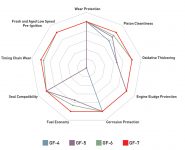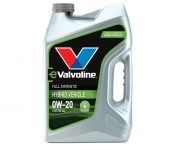HOW TO IMPROVE FUEL ECONOMY AND MAXIMISE HORSEPOWER
Valvoline is proud to introduce its Restore and Protect Premium Full Synthetic Engine Oil
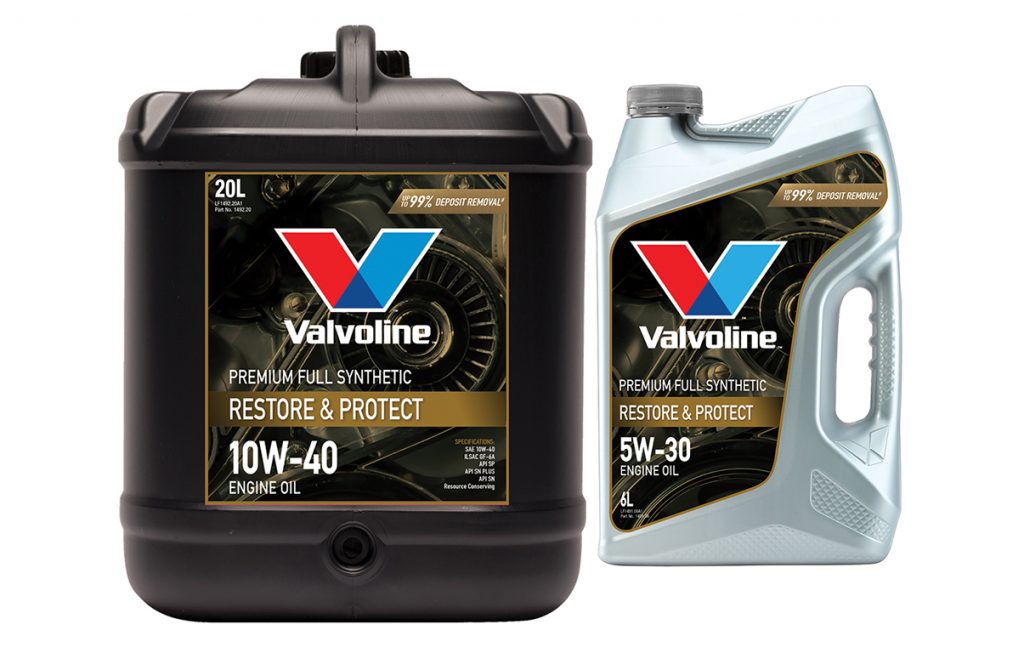
Whether your customer’s SUV has lost its giddy-up or their car’s fuel economy is affecting their personal economy, Valvoline says the new Valvoline Restore and Protect Premium Full Synthetic Engine Oil is here to help your customers.
With continuous use, Restore and Protect reportedly removes up to 99 percent of harmful piston deposits# and prevents future deposit formation to restore engines to run like factory clean, helping to maximise horsepower and fuel efficiency.
Where do damaging deposits come from?
Pistons move and control engine oil flow through the cylinders for lubrication and friction reduction. They also control gases generated during the combustion process as your engine burns petrol.
Over time, when your engine runs, incomplete fuel combustion and the degradation of engine oil can cause deposits and varnish to form on metal surfaces, primarily the pistons.
The problem with piston deposits
An engine contains many metal surfaces that constantly interact as the engine is running. Because pistons get most of that surface-oil interaction, they also receive most of the deposits.
Deposits and varnish inhibit oil film on metal surfaces and can prevent oil additives like detergents and friction modifiers from forming an effective layer of protection.
What’s more, deposits insulate metal surfaces, so heat isn’t effectively removed, leading to higher engine temperatures that create more deposits.
If left unchecked, piston deposits rob your engine of fuel economy, horsepower, and engine life.
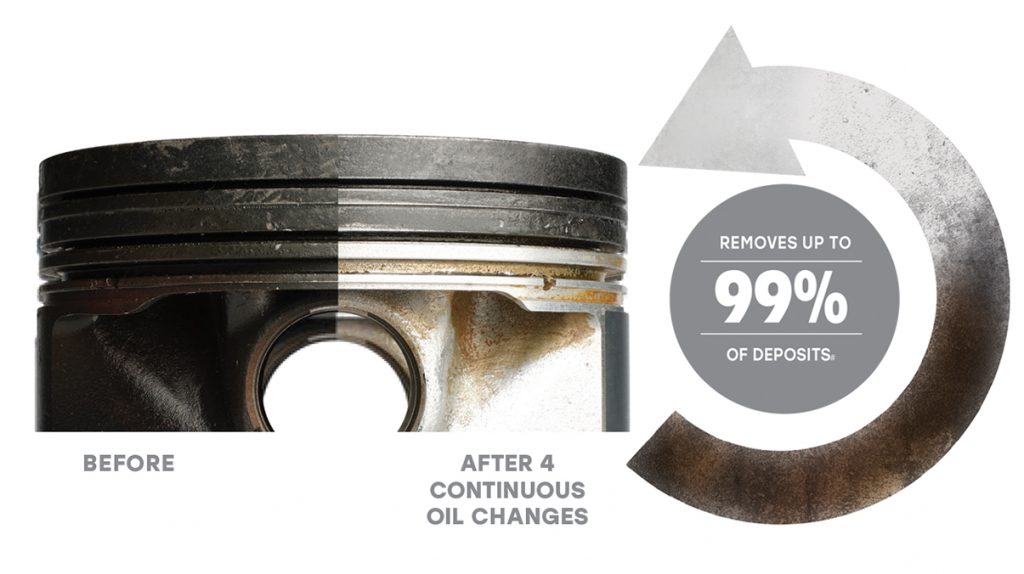
Piston rings and blow-by explained
Most internal combustion engines have pistons designed with three rings.
The compression ring, at the top of the piston, keeps the gases produced by burning fuel in the combustion chamber.
The second ring, known as the wiper ring, wipes the combustion wall to form a uniform oil layer.
The bottom ring, or oil ring, wipes excess oil from the cylinder wall during piston movement, ensuring the excess oil is returned through ring openings to the oil reservoir in the engine block.
All three rings ride in grooves machined into the piston circumference, and as deposits buildup inside the groove, the rings become stuck.
This results in the seal losing effectiveness and allowing excess oil to move up the piston, causing inefficient combustion, knocking, low speed pre-ignition and ineffective heat removal due to increased deposits.
It can also lead to blow-by, where combustion gases, a mixture of air and fuel, pass by the rings and infiltrate the crankcase and engine oil that’s moving around the cylinder walls.
This leads to sludge, corrosive wear, and a decrease in viscosity, and as blow-by compounds, the pistons and cylinders get dirtier, decreasing engine efficiency and performance.
Returning pistons to factory clean, so engines run like new
No matter the age of the vehicle, engine-killing deposits are building up on the pistons, and they’re not visible unless you take apart the engine.
These harmful deposits dramatically affect performance, fuel economy and even the longevity of an engine.
Preventing damaging deposits isn’t enough, and so Valvoline says it innovated a way to reverse them.
It says the result of this innovation, Valvoline Restore and Protect, is the first and only engine oil that returns pistons to factory clean.
In fact, it removes up to 99 percent of deposits when used as directed for four or more consecutive oil changes at standard maintenance intervals, based on adapted sequence IIIH testing.#
Goodbye deposits, hello clean engine
A clean engine is vital to minimising friction and maximising performance. Formulated with Liqui-Shield, Valvoline’s Restore and Protect helps by preventing deposits from forming in the future.
By now you may be wondering if deposits and varnish vanish or end up somewhere else, like in the oil filter.
Valvoline says its Restore and Protect features proprietary Active Clean Technology that chemically dissolves deposits into microscopic pieces, so they’re suspended in the engine oil and leave the engine during your next oil change.
It states there’s no impact on the performance or longevity of the oil filter.
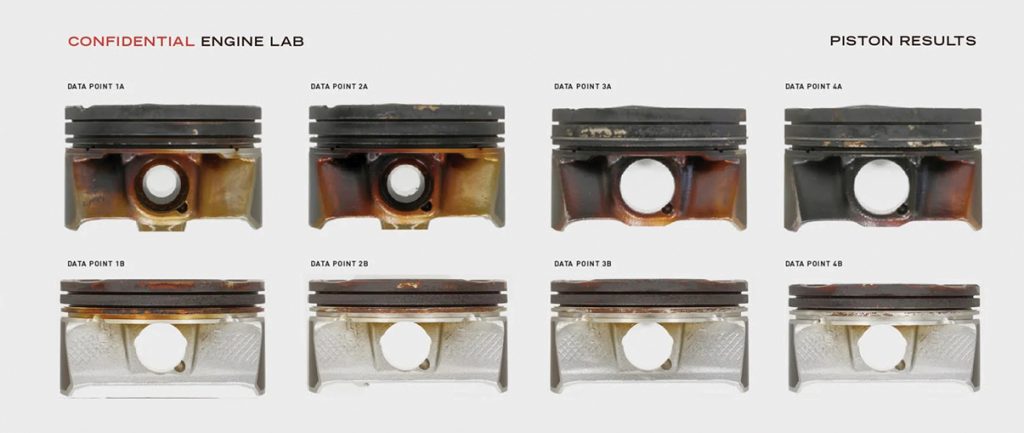
How do we know it works?
In side-by-side tests, Valvoline says it compared deposit buildup of an industry-qualified GF-6A engine oil versus deposit buildup of Restore and Protect.
After evaluating at 160,934 kms, Valvoline ran an additional 321,868 kms of testing, stating that the results revealed cleaner engine parts at 483K kms than at 160K kms.
But it didn’t stop there, says Valvoline, stating that modified industry testing based on on-the-road driving habits confirmed the results.
When should you use Valvoline Restore and Protect?
Whether you own a newer vehicle or one with high kilometers, Valvoline says Restore and Protect works best if you use it consistently during each oil change interval, as recommended by your vehicle manufacturer.
Valvoline states it is fully backwards compatible, allowing you to make the switch even if you have been using a different brand, as long as it is the grade and oil type as specified in your owner’s manual.
A breakthrough in engine oil technology
Valvoline states that its Restore and Protect is “a first-of-its-kind innovation” and “the biggest breakthrough in engine oil” since Valvoline introduced it more than 150 years ago.
In other words, the company says “it’s the type of engine oil you’d expect Valvoline to invent.”
Those behind the product explain that this isn’t an engine treatment or engine oil additive – instead it is a fully formulated ILSAC GF-6A and API SP premium engine oil with 79 percent stronger wear protection versus ILSAC GF-6 qualified oil.*
For better fuel efficiency and longer engine life, Valvoline encourages you to introduce your customers to Valvoline Restore and Protect Premium Full Synthetic Engine Oil – “the first engine oil to both actively restore engines and protect them against future damage.”
For more information, visit www.valvolineglobal.com.au
# Up to 99% piston deposit removal when used as directed for four or more consecutive oil changes. Based on adapted sequence IIIH testing.
*vs. ILSAC GF-6 qualified oil.



